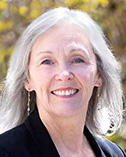
Maura E. Hagan
Utah State University
|
Primary Section: 16, Geophysics Membership Type:
Member
(elected 2019)
|
Biosketch
Maura Hagan is a space physicist recognized for her work on dynamical coupling in the Earth's atmosphere with particular emphasis on the role of global-scale waves known as solar atmospheric tides. Hagan was born in Winchester, Massachusetts and grew up in New Hampshire. She graduated from Emmanuel College in Boston, Massachusetts with a bachelor's degree in physics. Hagan earned her master's and doctoral degrees in physics from Boston College in 1980 and 1987, respectively. She was a research staff member at the Massachusetts Institute of Technology Haystack Observatory prior to joining the National Center for Atmospheric Research (NCAR) in 1992. Hagan spent more than twenty years as a scientist and administrator at NCAR. Hagan assumed her current position as Dean of the College of Science and Professor of Physics at Utah State University in 2015.
Research Interests
Maura Hagan's research interests are focused on the physics of the atmosphere and ionosphere, particularly dynamical coupling between atmospheric regions, including the downward penetration of space weather events, and the effects of upward propagating meteorological disturbances on the near geospace environment. Hagan developed the Global Scale Wave Model (GSWM), which describes the behavior of planetary waves and solar atmospheric tides within the Earth's atmosphere. In 2006 she was part of the team who identified the first global connection between space weather and weather on Earth. The collaborators used IMAGE spacecraft measurements to study longitudinal variability of bands of electrons in the low latitude upper atmosphere. Hagan's GSWM simulations of upper atmospheric tides produced by latent heat of evaporation associated with raindrop formation in deep tropical clouds produced longitudinal variations well correlated with the observed variations in the band structures. Connections between meteorological weather and space weather subsequently evolved into an active area of ongoing research.

